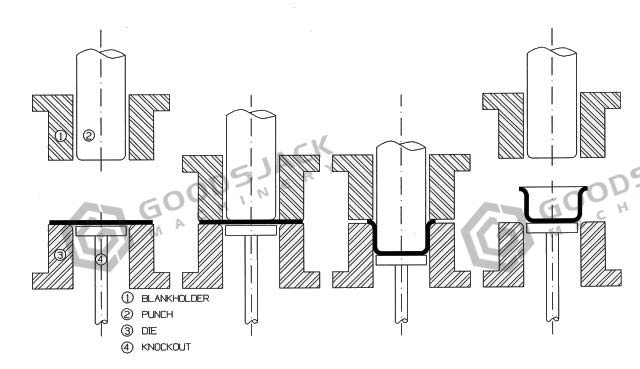Metal sheets are formed using deep draw stamping to create different types of hollow axisymmetric parts. The deep drawn stamping services offer mostly cylindrical shapes, but it can produce box-shaped components as well.
Additionally, it may be used in forming various industrial and household objects, including baking pans, sinks, automotive parts, plumbing fixtures, casings, beverage cans, and many other components.
With this type of metal stamping, a punching motion is applied to the metal sheet forcing it into the die cavity. The process begins by placing a metal sheet on the forming die.
Then, the sheet is held in place using compressive force applied at both ends with a blank holder. Meanwhile, the sheet has an axial force applied using a mechanical punch tool, forcing the piece to deform while flowing into the die cavity and making the shape desired.
The term “deep drawn stamping” received the name due to the last component, typically having depths that are larger compared to the diameter.
The deep drawing process is widely used in many industries, including Automotive, Aerospace, household appliances, Plumbing, Lighting, and Electronic, etc.

One key benefit includes the high-quality characteristics of final components. Parts are produced using a single piece of metal, creating a final product without joined parts or seams.
Therefore, reducing the potential for weak points, further reducing the chance of leaks or failure which products with seams are susceptible to.
Besides, the deep drawn stamping process increases the strength of the material. A term referred to as ‘strain hardening.’
As the metal is deformed, the material’s crystalline structure is rearranged, causing the final product to become stronger.
The deep drawn stamping process offers advantages to higher production volume. After an appropriate die and tooling are created, the stamping can produce thousands of high-quality parts through an automated process with repeatable accuracy.
This results in minimized downtime and cycles, keeping the unit cost down for every produced part.


 +86-769-8306-1993
+86-769-8306-1993
 E-mail
E-mail
